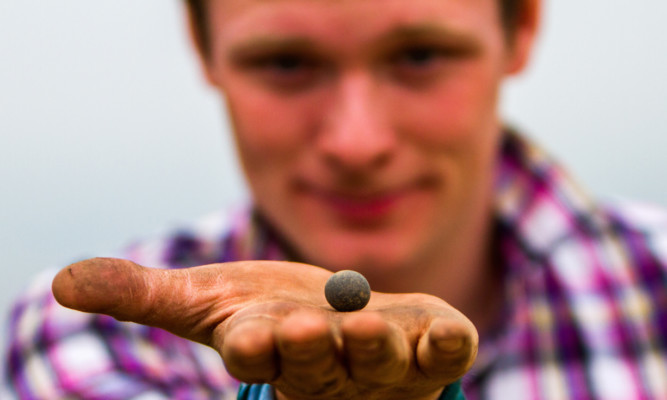Evidence of Moredun Top’s status as the Tay Valley’s greatest seat of Iron Age power has been indisputable.
Chieftains once ruled the land for miles around from behind the stone and log palisade walls of a giant hill fort on its summit.
Some experts had, however, questioned claims of a second, smaller fort, overlooking what is now Bridge of Earn from a site on the lower slopes of Perth’s Moncreiffe Hill.
Unlike at Moredun Top, where the layout of the fort can still be seen, its archaeology is not as plainly visible on the ground.
Now a team comprising members of Perth and Kinross Heritage Trust, AOC Archaeology and the University of Glasgow has silenced such voices once and for all.
They carried out the first archaeological dig ever undertaken on the hill and have uncovered a series of exciting finds.
Vitally, they include evidence of a mixed construction fort built from a combination of stone, timber, earth and turf at the lesser site.
The discovery of the stone ramparts resting beneath the soil was a huge moment for all involved in the project.
The material uncovered has now been sent to the specialist National Environment Research Council (NERC) part of the university to be carbon dated.
In a few weeks, the trust’s manager David Strachan will discover whether the Moncreiffe fort was of Iron Age or Dark Age construction.
A number of artefacts have also been unearthed, with archaeology student Andrew Cooper the first to make a find.
He discovered a shale bracelet and then a small, perfectly spherical stone which may once have been found in a river bed, but which the team believe was almost certainly used as a playing piece for an ancient game.
“There were a surprising number of finds from the three relatively small trenches that were dug,” David said.
“They included numerous stone artefacts, including quern stones which would have been used for grinding food the shale bracelet and a gaming piece made of stone.”
He added: “It may take a few weeks to get back the results of the carbon dating but it’s an exciting time for us all.
“We’ve also taken a laser survey of the site and together with the information we’re collating from our first dig that will help us target our efforts during the next excavation.”
The team will return to the smaller fort numerous times over the next few years, while the first excavations at Moredun Top will begin in 2015.
Three digs will then be held each year for the next three years as the team bid to uncover its secrets.
Both fort sites are scheduled ancient monuments and are offered protection by Historic Scotland.
David is keen to see that they remain protected and that none of the archaeological evidence is lost.
“There has been metal detector activity in the area in the past, but I would urge people not to do this.
“Not only are they breaking the law, the activity can also be very destructive to sensitive sites such as this.”
